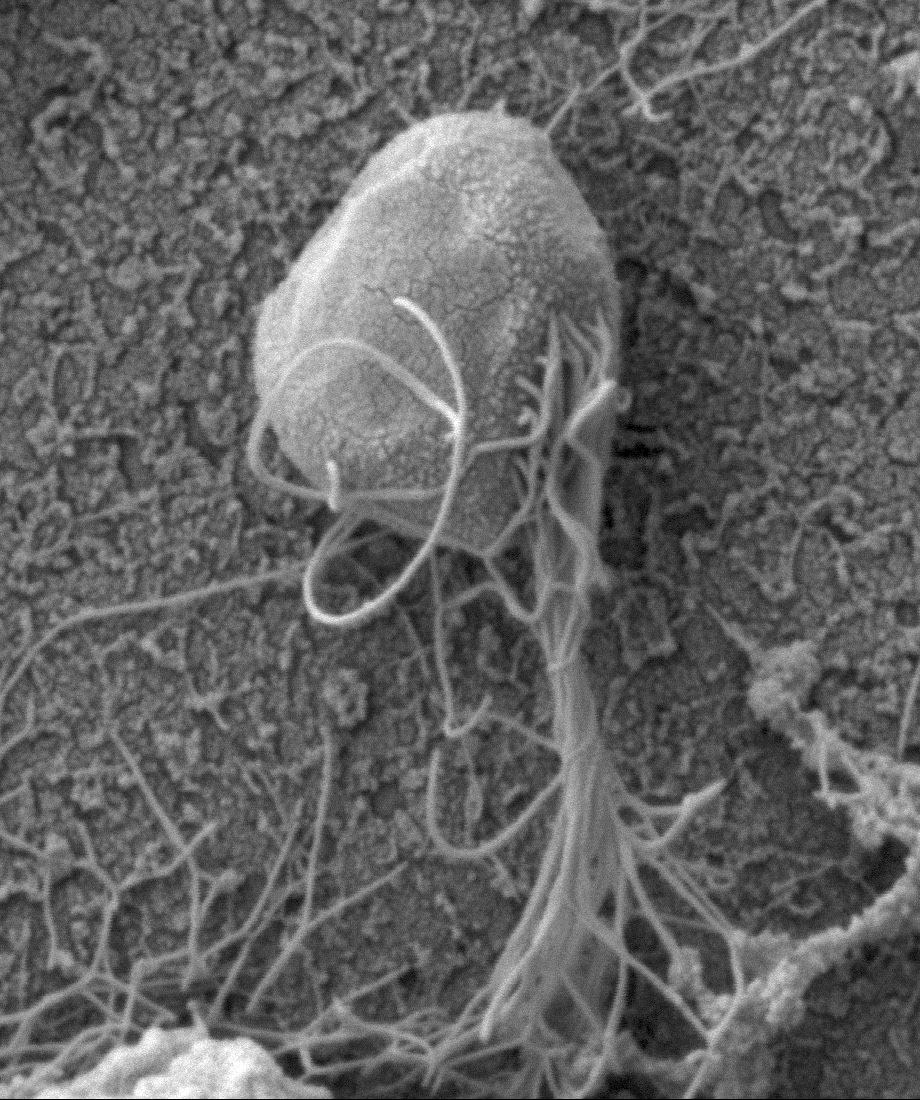Are archaea also bacteria?

Like bacteria, archaea are unicellular microorganisms without a true nucleus. Together they are known as "prokaryotes" (Greek, without a nucleus). Archaea and bacteria therefore look similar at first glance, but their cell structures are fundamentally different. Archaea are considered to be very old life forms, hence their name (Greek archaios, ancient). Even though archaea share certain biological characteristics with bacteria, they have many archaea-specific features and even some characteristics that are only known from eukaryotes (i.e. cells with a real cell nucleus) such as plants or animals. Archaea are therefore listed as a separate domain in the family tree of life alongside bacteria and eukaryotes. Researchers now assume that cells with a real cell nucleus (eukaryotes) and thus plants, fungi, animals and humans evolved from archaea.
An important difference to bacteria is the composition of basic cell structures such as the cell wall or the cell membrane. For example, the archaeal cell membrane lacks the typical fatty acids of the bacterial membrane.
Another fundamental distinguishing feature is the enzyme DNA-dependent RNA polymerase, which is required for transcription, and typical eukaryotic proteins have been discovered in certain archaea (Asgard). This reignited the debate about the origin of higher life forms. Researchers now assume that the "primordial cell" of eukaryotes was an archaeal cell into which a bacterial cell migrated.
Methane-producing archaea (methanogens) were discovered at the beginning of the 20th century, but were categorised as bacteria due to their size and lack of a nucleus. Carl Woese disproved this categorisation in 1977 by comparing nucleic acids from ribosomes. He showed that the archaea are a third group of equal rank to the already known eukaryotes and bacteria. He chose the name because these organisms probably already existed on Earth 3-4 billion years ago.
Since then many other representatives of archaea have been found around the globe, especially in very hot, salty or acidic habitats such as the deep sea, oxygen-free sediments, burning coal tailings or hot sulphur springs. They often play a key role in the Earth's material cycles. One archaeon that grows best at 100°C is the "raging fireball", Pyrococcus furiosus. It was isolated from hot marine sediments in Italy and today serves as a model organism for archaea research.
We now know that archaea are not only found in extreme locations, but practically everywhere, including on and in us humans. In our intestines, for example, archaea help to break down complex nutrients. We have known since 2013 that archaea live on our skin, even if their function there is still unclear. No pathogens have yet been identified among the archaea, which is why it is assumed that archaea are not dangerous to humans, animals or plants.
Archaea are used in biotechnology and in the energy sector. Methanogenic archaea contribute to the production and storage of renewable energy in biogas or methanisation plants and are therefore an indispensable component of a successful energy transition. Archaeal enzymes have also become indispensable in areas such as the detergent industry or everyday laboratory work (polymerase chain reaction, polymerase from P. furiosus). The fact that the enzymes of many archaea are active at high temperatures is utilised here.

Scanning electron micrograph of the hyperthermophilic archaeon Pyrococcus furiosus (Source: Prof. Dr. Andreas Klingl, LMU München)
Read more:
https://www.biologie-seite.de/Biologie/Archaeen
https://www.laborjournal.de/rubric/special/special/2020_09_04.php
© Text Annett Bellack, Florian Mayer, Dina Grohmann und Harald Huber /VAAM, Dina.Grohmann[at]biologie.uni-regensburg.de, Nutzung gemäß CC 4.0
© Abbildung Sarah Willkomm, Nutzung gemäß CC 4.0

